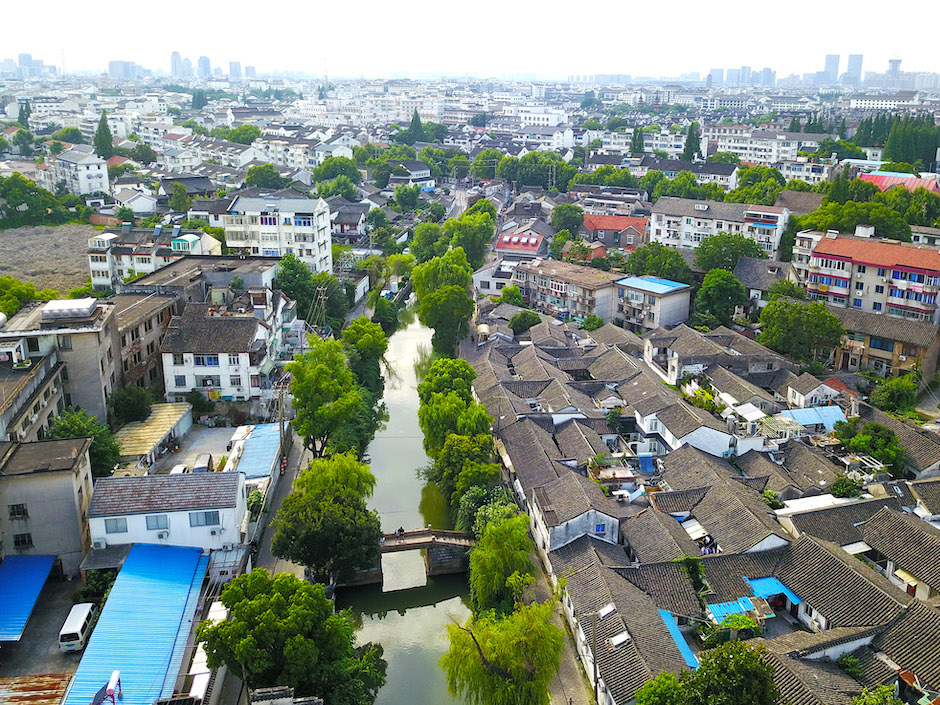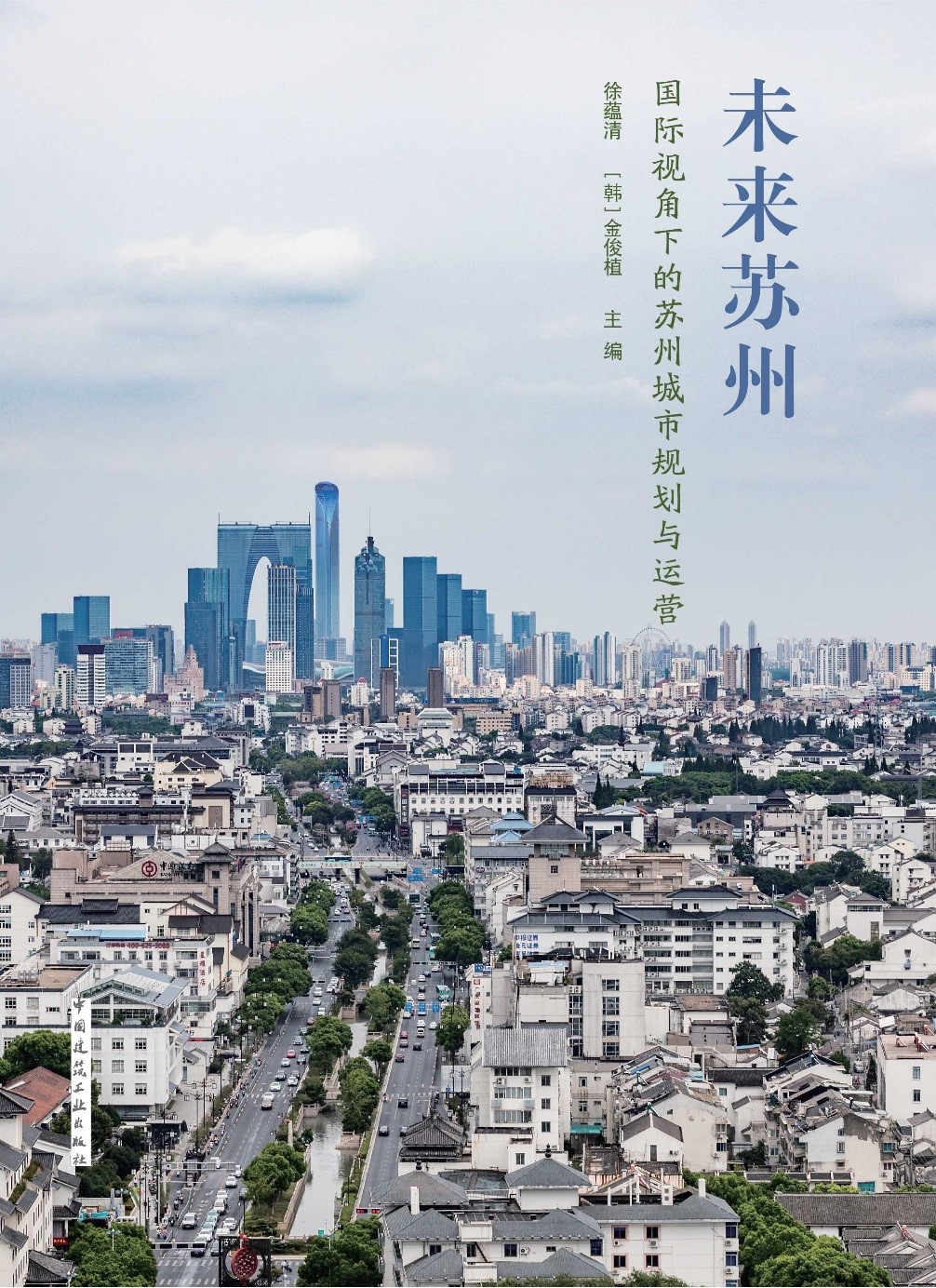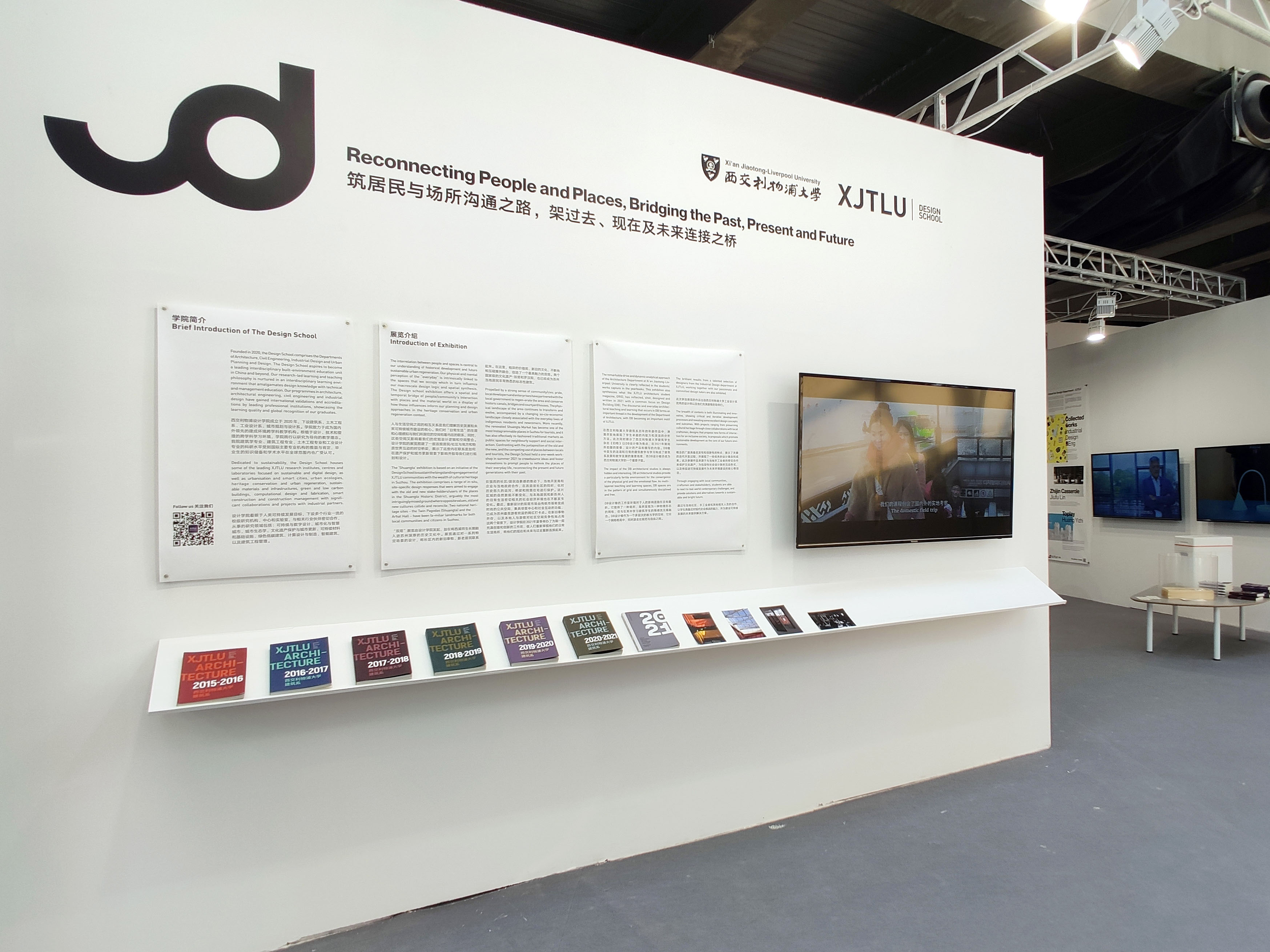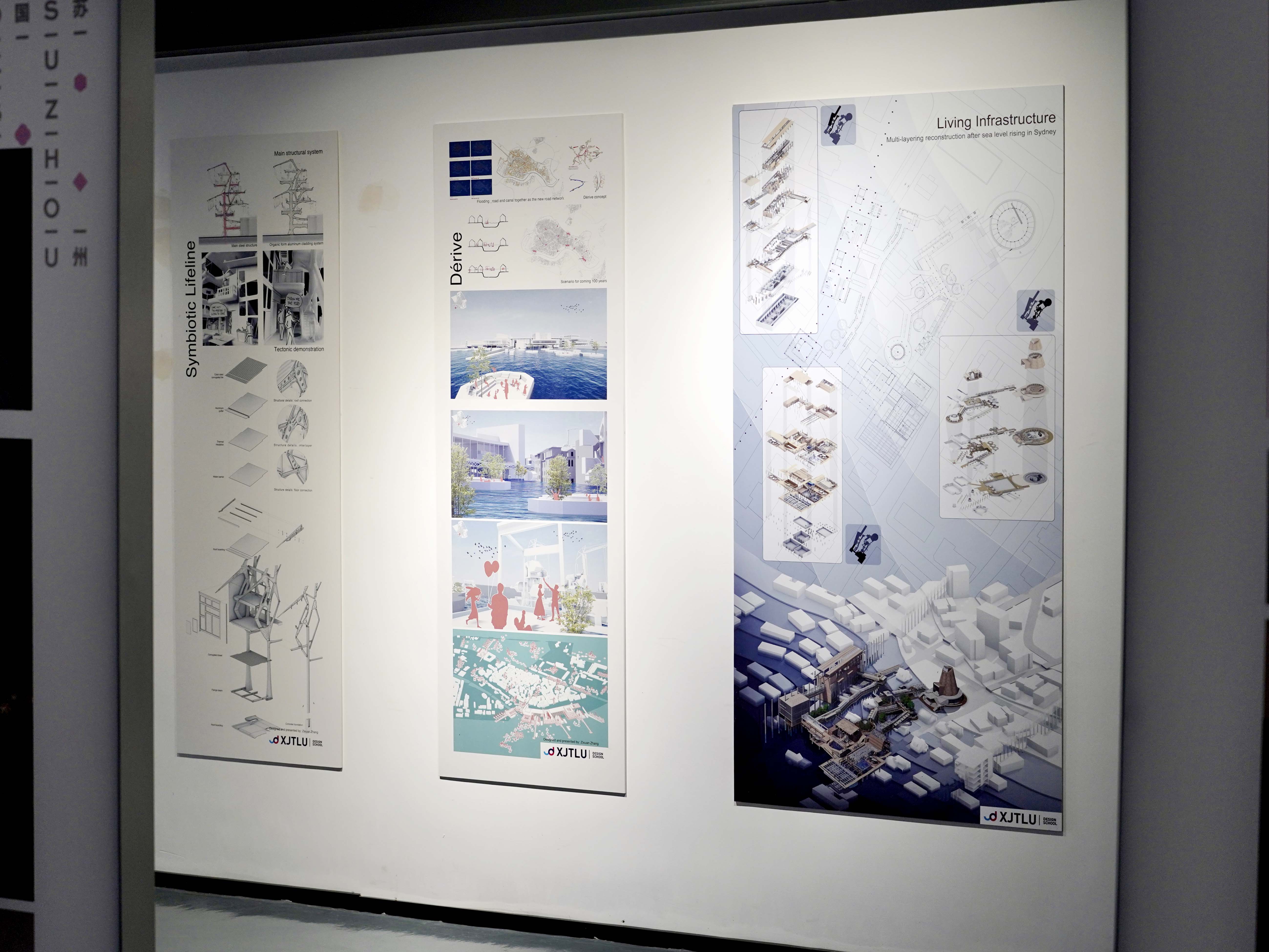22 Apr 2022
Known as “paradise on earth”, Suzhou has long been famous for its exquisite gardens and silk garments. Today, in addition to its rich history, it is one of the most dynamic and rapidly developing cities in China, attracting millions of migrants and tourists.
As a perfect example of the contrast between old and new, and slow and fast, Suzhou has always been an interesting city for researchers. An article recently published in the East Asian Journal of Philosophy presents a series of chapters by eight academics on the city from eight different points of view, including its location, urbanisation, planning, and gardens.
 Drone photo of Suzhou city
Drone photo of Suzhou city
Connection with water
Surrounded on all sides by canals and lakes, i.e. the Yangtze River, Lake Tai and the city’s Grand Canal, Suzhou has a deep connection with water. However, this does not end at the perimeter of the city. The water landscape enters its famous gardens which are mostly formed around water, says Dr Teresa Hoskyns, former associate professor at Xi’an Jiaotong-Liverpool University’s Department of Architecture.
 Watertown of Suzhou
Watertown of Suzhou
“The gardens recreate natural Chinese landscapes in miniature, including mountains and water,” Dr Hoskyns says. “Diverting the waters and stacking stones were essential techniques to the construction of Suzhou gardens.
“Suzhou’s waterfront development continues on a larger scale, for example, Jinji Lake in the modern Suzhou Industrial Park district.
“The waterfront is designed to encourage gatherings and celebrations with the large open spaces. This is a contrast to the city’s walled gardens and narrow waterways, and marks China’s changing attitude to public space,” she says.
 Jinji Lake
Jinji Lake
Between tradition and modernity
The Chinese painting Along the River During the Qingming Festival by Qiu Ying portrays clear contrasts between the places inside and outside the city in the past. Inside the city, the architecture and streets are regular and planned, while the market space outside the city is crowded and holds various activities, explains Dr Jiawen Han, associate professor at the department.
If one compares the current Suzhou city to the one on the painting, Suzhou Industrial Park could be regarded as a modern equivalent of the urban space inside the city wall during the Ming dynasty, although it is much more regular than its historic counterpart. The Old Town of Suzhou, with its crowded roads and bustling markets, accommodates more spontaneous activities today than the past, says Dr Han.

“Studies have always analysed Suzhou in a framework of old versus new, or tradition versus modernity, but there’s no consensus regarding what tradition and modernity really are in Suzhou’s radical societal transformation.
“The Old Town of present-day Suzhou should not be seen only as traditional, but as the continued effort or alternative version of the pursuit of modernity in the contemporary context,” she says.
Dr Glen Wash Ivanovic, also an associate professor at the department, says that while people focus on the uniqueness and tradition of the old town or new developments like Suzhou Industrial Park, the half-demolished in-between is ignored.
“What we have now is a new urban phenomenon: the fringe is no longer at the outskirts of the city, but is shattered and dispersed within the city.
“We need to look at the seams between Suzhou’s urban parts and recognise them as retainers of continuity and memory, instead of only spaces of transition,” he says.
Suzhou gardens and courtyards
The Chinese name for a traditional garden, yuánlín(园林), has its roots in a legendary story from the Buddhist Sutras, in which Buddha discusses the Dharmas – the philosophy in Buddhism – at the Jetavana Vihara monastery, which consisted simply of a piece of paved courtyard, yuán (园), with a forest, lín (林) behind it, explains Dr Yiping Dong, associate professor at the department.
“The construction of Suzhou gardens was influenced by Buddhism – spaces were designed for intellectuals to debate, meditate, and reflect from within the forest and courtyard,” she says.
 Shadow Garden in Suzhou
Shadow Garden in Suzhou
The Chinese courtyard manifests a way of living, says Dr Tordis Berstrand, former lecturer at the department.
“While traditional houses are hierarchical and somewhat symmetrical, the garden is a Daoist space for free and easy wandering.
“Courtyards and gardens are boundless spaces, despite being enclosed and walled,” she says.
The impact of Suzhou gardens goes even beyond China, to the south-east Asian peninsular Malaysia. In the 1890s, a small group of people travelled there from the Yangtze River Delta region, according to Siti Balkish Roslan, lecturer at the department.
“Their influence transcended and merged into Malaysian culture – a remnant of Suzhou’s architectural past is given new meaning and life in a new context in Malaysia,” she says.
Suzhou gardens and paintings
The writing of poems and the painting of landscapes were part of the design process of Suzhou gardens, says Dr Claudia Westermann, senior associate professor at the department.
“Gestured language, the basis of both calligraphy and painting, also engendered the gardens and courtyards.
“Images or scenes, first created in poetry but experienced through calligraphy, were transferred into painting and then into three-dimensional images of living matter,” she says.
 Humble Administrator’s Garden in Suzhou
Humble Administrator’s Garden in Suzhou
Chinese paintings were often collective and participatory works – they were meant to be exchanged and reproduced to reach a wider audience across space and time, says Dr Amir Djalali, assistant professor at the department.
“A painting is a portable garden. Like a painting, a garden is a collective work of art that changes and is enriched over time,” he says.
The article, A Conversation on a Paradise on Earth in Eight Frames, can be accessed online here.
By Yi Qian
Edited by Patricia Pieterse
Photos courtesy of the Department of Architecture
22 Apr 2022
RELATED NEWS

Future Suzhou: XJTLU scholars discuss future cities in new book
In the last few decades, Suzhou has transformed at a miraculous speed into an important modern city. However, it also faces planning and operation challenges...
Learn more

Shanghai exhibition: Connection of people and place
The Design School at Xi’an Jiaotong-Liverpool University (XJTLU) recently joined other top art and design institutions from around the globe in an exhibition...
Learn more

XJTLU presents future architecture ideas at Suzhou Design Week 2021
Last month, Suzhou Design Week 2021 kicked off with the theme Design, City, Future. Academics and students from three universities in Suzhou collaborated and...
Learn more







